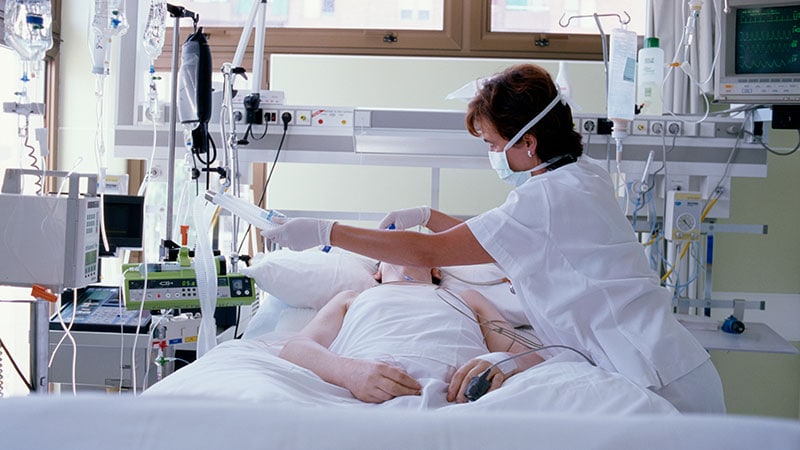Unmatched Realities: The Challenges of Match Day
Match results are in.
On Monday, March 11, students learned whether they matched to a residency program; this Friday, they find out where. The past few days have been a scramble for the 10% who didn't match this week. From Monday to Thursday, unmatched students become frenzied to secure one of the few remaining spots, even if it means changing specialties.

The process is strangely ritualistic and shrouded in apprehension. Students feel their medical careers hinge on this 1 week, spending tens of thousands of dollars in the selection process to get to this moment. And even if they did match, more than half won't get their first choice. Most will spend the week worried about where they will soon be training, the cities they must move to, and how it will affect their life and their families.
But experts say the events of Match Week are the culmination of far deeper problems. The Match, after all, is just an algorithm — one that works quite well. It's the months-long process leading up to this week, the extremely expensive and time-consuming arms race for training spots that fourth-year medical students have to complete, that's the real problem. It's more systemic than this week-long frenzy. And students, residents, and programs are out to change it.
Snowball Effect
The problems with the residency selection process were at least partially instigated when medical schools started using a centralized application system in the 2000s, said Maya Hammoud, MD, chief of women's health and associate chair for education at the University of Michigan, Ann Arbor, Michigan.
Over time, it's become easier and easier to apply to more programs. Out of fear and knowing the average number of the class before them, students felt the need to submit to additional programs, Hammoud said. The result is a snowball effect that, in 2022, propelled US medical students to submit an average of 78 applications, whereas international medical students submitted an average of 102.
Programs are inundated with applicants. Hammoud told Medscape Medical News that the ob/gyn program at the University of Michigan received 900 applications for six spots.
Meanwhile, students spend thousands of dollars just in application fees to pursue 70, 80, or 90 residencies, most of which they don't have a true interest in. The process is inherently biased against lower-income med students and those from backgrounds that are underrepresented in medicine, Bukky Akingbola, MD, third-year ob/gyn resident at the University of Minnesota, Minneapolis, Minnesota, said.
Overlooked Talent
The more applications, the more manpower and money programs have to devote to the process — and the more likely they are to rely on filters like publication number or United States Medical Licensing Examination scores to pare down the applications.
"Part of the problem is that programs have no responsibility to evaluate students in a multifactorial way," said Bryan Carmody, MD, a pediatric nephrologist and medical education blogger. "If you evaluate people one way, you push people to show one type of talent."
The trouble with relying on metrics like test scores is that they don't select for better doctors or better care. As long as there are more applicants than residency spots, some students will always be unhappy. But if the competition for those positions makes them better doctors, "that's a virtuous competition," Carmody said. Even those students who don't match would benefit.
As it stands, that's not the case. The current selection process doesn't esteem students who make society better. In fact, it stifles diversity and lends itself to outright fraud, as seen in the recent cheating scandal, Carmody said.
The Lost Year
By the time the selection process has run its course, students have devoted the majority of their fourth year to standardized testing, personal statements, securing interview spots, and meeting with programs.
Some med schools give students some months off or a lighter rotation to focus on the process, Akingbola said. And while she appreciated the flexibility at the time, it cost her a fourth year of training — and tuition. "In hindsight, I would have wanted to be in labor and delivery or on big gynecological cases," she said.
Abigail Ford Winkel, MD, vice chair for education at NYU Grossman School of Medicine and professor in the Department of Obstetrics and Gynecology, agreed. "My only real criticism is it's detracting students and faculty from preparing these medical students to be doctors, which is the priority."
A better option might be to shorten the application process, limit the entire application, interview, and match in the fall to give students their final semester back. But that kind of reform would take a "herculean effort," Akingbola said.
Incremental Change
So much of resident selection is steeped in tradition. But leaders and students are pushing back against the way things have always been. In 2019, the American Medical Association's Reimagining Residency initiative funded two grants to help medical students transition to residency.
One grant awarded to the Association of Professors of Gynecology and Obstetrics ultimately led to the American College of Obstetricians and Gynecologists developing a separate application for ob/gyn applicants. It will launch in 2025 and be less expensive than the current system is.
The team, led by Hammoud, also standardized the date for offering interviews so students don't have to anxiously check their inboxes for months. And they built a new feature into the application allowing students to signal their preferred programs on applications. They launched the signaling option in 2023, and last year, the average number of applications per student for ob/gyn actually went down, Hammoud told Medscape Medical News.
Akingbola, who chairs the trainee advisory arm of the ob/gyn grant, said programs are looking for students who truly want to be there. When she was applying, she wished she'd had a way to let the University of Minnesota know that they were her top choice, that "I'm not just one of the thousands of applicants, I would truly come here."
Since the ob/gyn specialty made these updates, seven other specialties have standardized their interview date, and 20 have added signaling to the application. "People are hungry for better processes, and they see the improvements," Hammoud said.
Winkel at NYU is leading another grant-funded project to get medical trainees coaching. At NYU, medical students get one-on-one coaching in their first year. Now they're expanding the effort to give upcoming residents coaching after Match Day. After all the turmoil of the match, this is a way to ensure trainees have personalized, holistic support through their first year of residency. Since receiving the grant, other schools have looked into the coaching structure, and Winkel has been invited to Grand Rounds, a special clinical training session, to present it.
She said, "It's not just about career advice. It's about helping these adults find their way to where they want to go."
Realistically, no one is going to completely overturn the residency selection program. However, some are making real incremental changes to specialties and programs to alleviate student anxiety.
Match Week will likely always cause some students disappointment, but the emotions of Match Day tend to even out, Carmody said. Surveys show that students who matched with their first choice are happiest in March, but by 6 months into residency, everyone's happiness is the same, he said.
"The person who is happy and successful in medicine , I think they would be happy and successful with many different training pathways."
Donavyn Coffey is a Kentucky-based journalist reporting on healthcare, the environment, and anything that affects the way we eat. She has a master's degree from NYU's Arthur L. Carter Journalism Institute and a master's in molecular nutrition from Aarhus University in Denmark. You can see more of her work in Wired, Teen Vogue, Scientific American, and elsewhere.


 Admin_Adham
Admin_Adham


